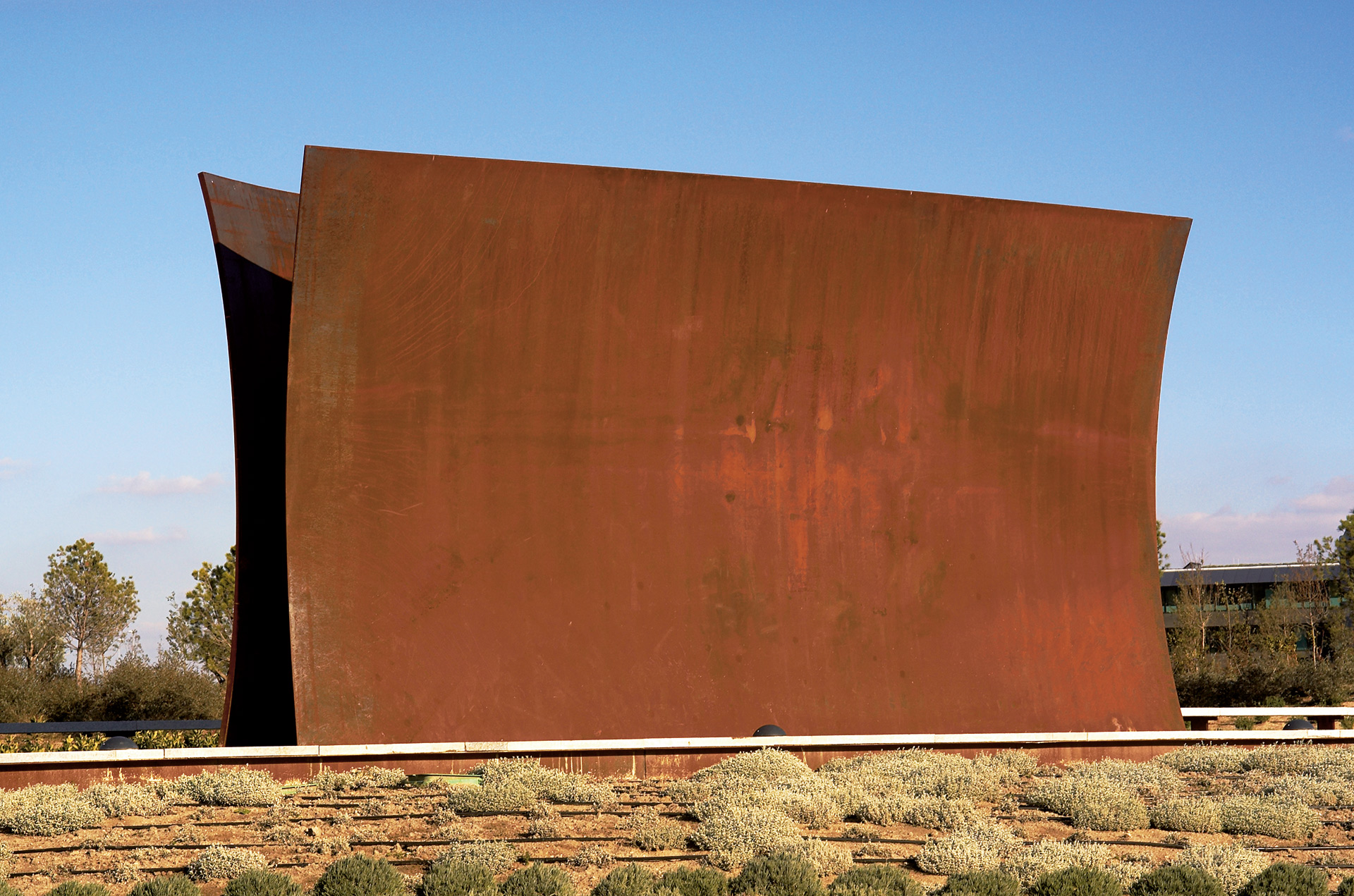
Richard Serra (San Francisco, California, USA, 1939)
Vertical Torus
2003
WORK INFORMATION
Two curved steel plates, 510 × 1010 × 150 cm
Richard Serra is internationally renowned as one of the greatest sculptors of the second half of the 20th century. In the 1950s and early 60s he studied fine arts at Yale University and later travelled to Paris, Florence and Rome, where he held his first solo show at Galleria La Salita. His first creations were produced during a period of intense formal experimentation, when he explored unusual materials like rubber and molten lead and their transformation processes. In the late 1960s he began making lead and steel sculptures that were minimalist in appearance but went beyond formalism. These abstract works are based on elementary geometric shapes like the square, the cylinder or the cube and on the physical properties of his chosen materials, arranging the pieces so that they supported each other in a perfect balance achieved without welding. Serra's sources of inspiration are found in the fields of metal engineering and modern architecture, ranging from Eiffel to Mies van der Rohe. This industrial, constructive dimension is omnipresent in his oeuvre, and to a certain extent it is informed by his knowledge of metal casting techniques, acquired when he worked at steel mills during his student years. Serra gradually made his sculptures ever larger and heavier, creating site-specific pieces commissioned for different locations in nature and the city.
In 2003, the year he made Vertical Torus, Serra was already a celebrity in the art world, with projects and exhibitions across the globe. In 2005 he completed his installation of eight massive sculptures for the Guggenheim Museum Bilbao entitled The Matter of Time, begun in the 1990s. The work in the Banco Santander Collection consists of two steel plates that curve in opposite directions, leaving a space between them. Its form and title refer to a fragment of a three-dimensional geometric shape called a torus, although it is also close to the concave-convex planes used in some of his other works. Serra's sculptures are often monumental in size and weight, although he rejects the traditional idea of the monument. Refusing to incorporate a pedestal, the sculpture rests directly on the ground. For Serra, steel sculpture is a form of construction—though lacking the utilitarian function of architecture—that requires working with variables such as gravity, balance, tension, mass, structure, loads and various manufacturing techniques or actions (to roll, to twist, to fold, to swirl, to cut, to enclose, to surround... terms found on his Verb List from 1967–1968). The manufacturing process is important, and Serra takes technical control to its logical conclusion in both the purely industrial stages and the final phases, when he strives to achieve chromatic effects with surface patinas that always differ for each type of steel he uses, creating its own layer of protection against atmospheric agents. Normally he decides on a form after studying the chosen site, and without making preliminary drawings he goes directly to scale models, testing the formal possibilities of these works which create their own space and offer spectators a tactile, visual, temporal and enveloping experience. [Carmen Bernárdez]

